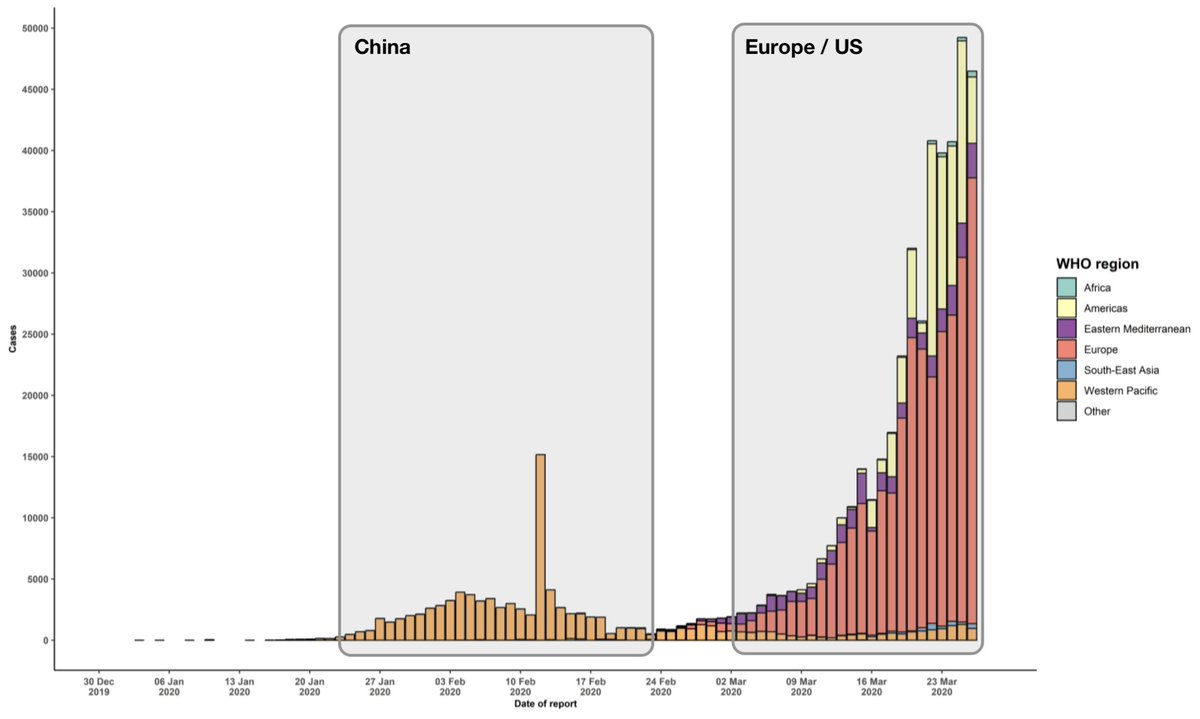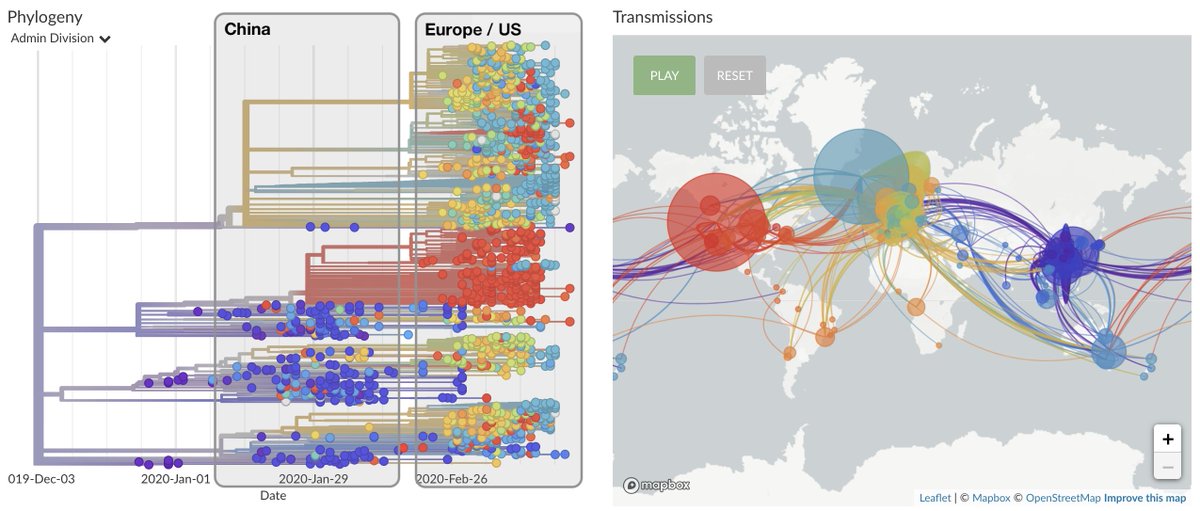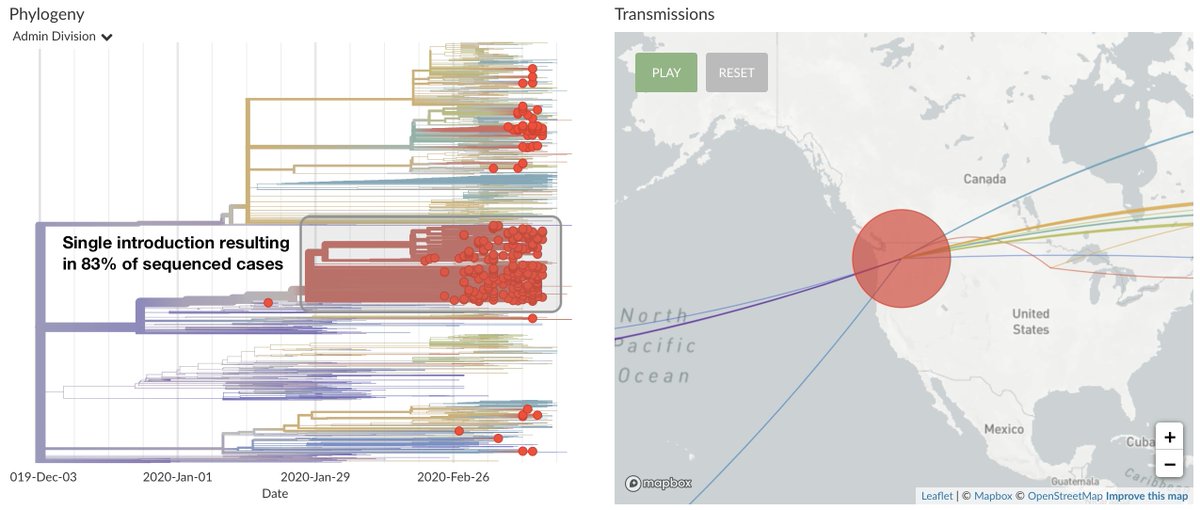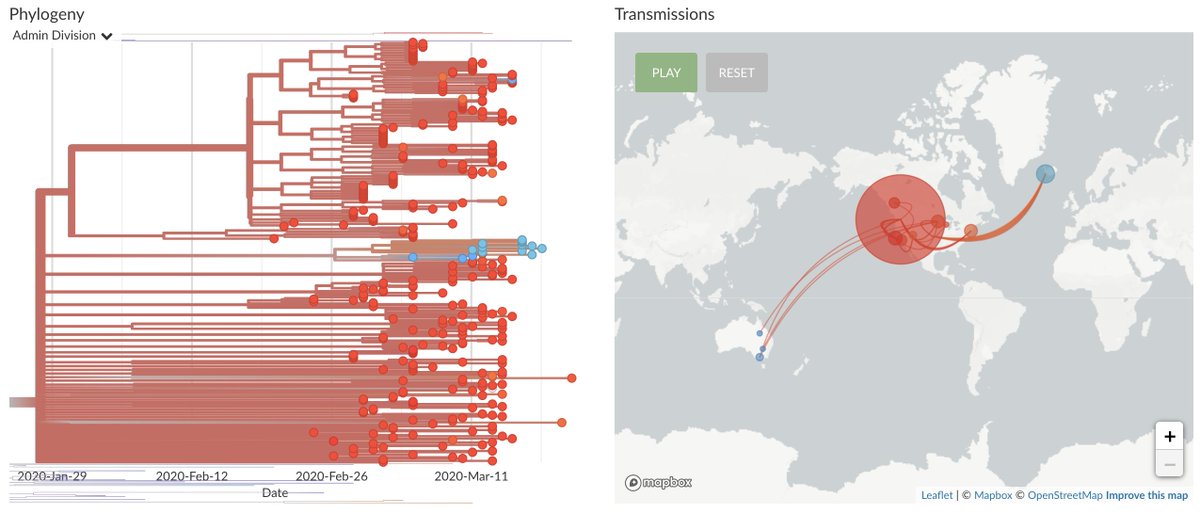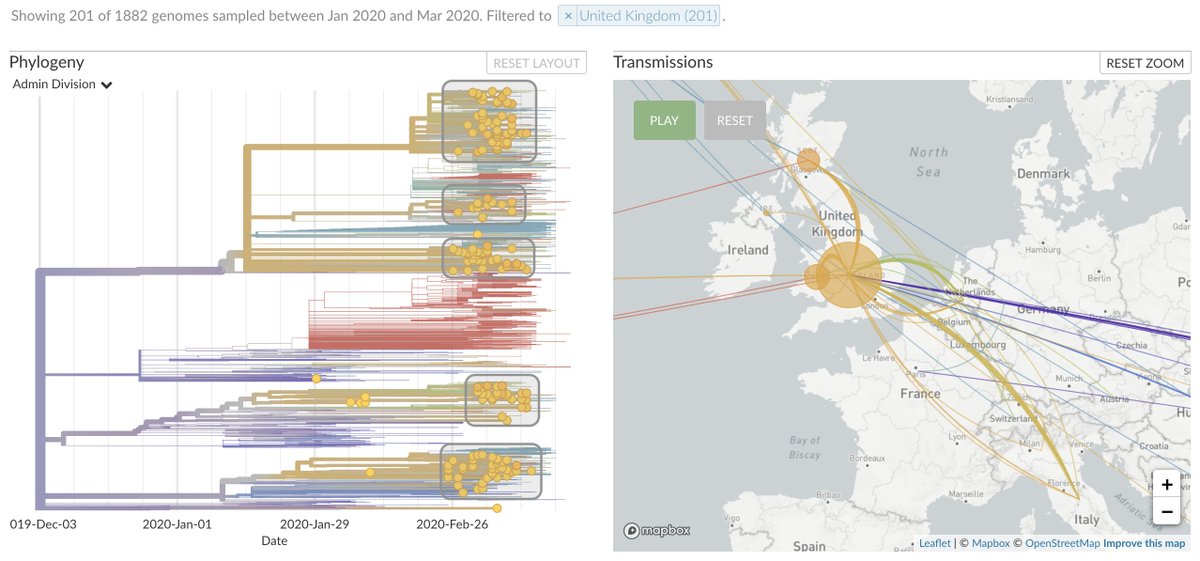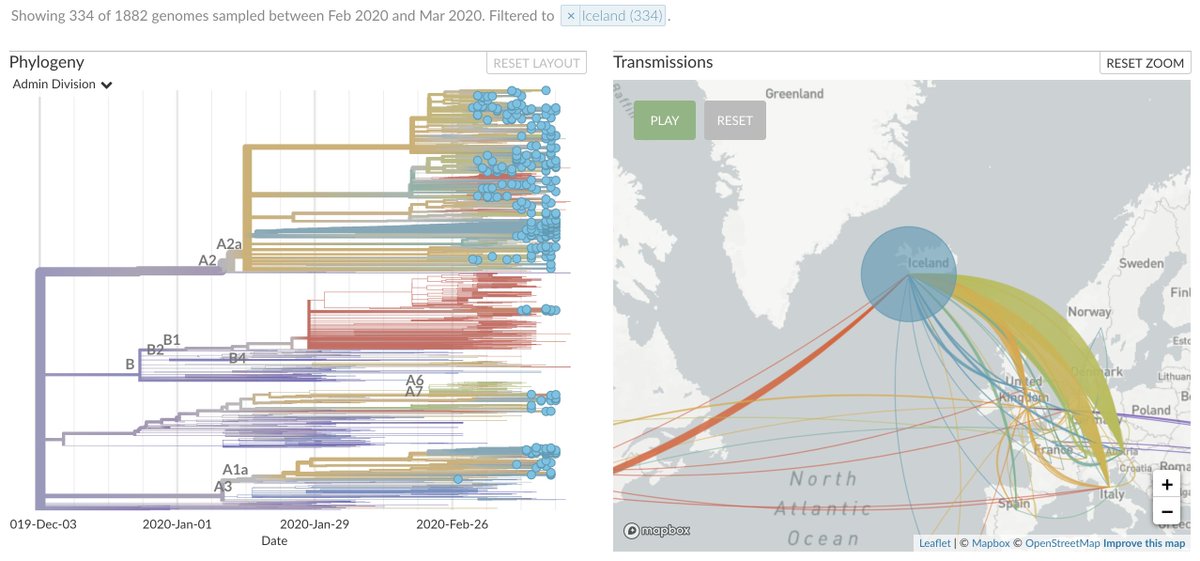Genomic sequencing of viruses from the #COVID19 pandemic can help reveal transmission patterns. Thanks to data sharing through @GISAID from groups all over the world, @nextstrain is now showing 1882 #SARSCoV2 genomes. This is an update on a few aspects of what we're seeing. 1/14
Here, you can see the Jan/Feb epidemic in China that was brought under control by the end of Feb, followed by epidemics in Europe and the US that pick up during the course of March. Figure from @WHO sit rep. https://www.who.int/emergencies/diseases/novel-coronavirus-2019/situation-reports 2/14
This can also be seen in the genomic data, where the Chinese epidemic dies out during Feb, but by this point the damage was already done and sparks had landed in Europe and the US. These sparks grew into fires and lead to the current epidemic. https://nextstrain.org/ncov 3/14
Here I focus on a few different well sampled and well sequenced geographies, where we can compare and contrast epidemics. 4/14
To begin, Washington State has had 354 viruses sequenced (out of 453 in the US). Here we see that the large majority (83%) of sequenced viruses from Washington State appear to descend from a single introduction event in late Jan or early Feb. https://nextstrain.org/ncov?f_division=Washington 5/14
This transmission chain has gotten big enough to throw off its own sparks, with sequenced viruses showing up elsewhere in the US, Australia and Iceland. https://nextstrain.org/ncov?label=clade:B1 6/14
Sequenced cases from elsewhere in the US and Canada are sometimes related to this transmission chain, but most (77%) derive from separate more numerous and smaller introductions. However, it's possible that further sequencing of other regions will change this picture. 7/14
Next up, 201 genomes from the United Kingdom. These show a different pattern in which there are multiple clusters of related viruses, suggesting repeated introductions into the country followed by local spread. https://nextstrain.org/ncov?f_country=United%20Kingdom 8/14
As you might expect, viruses from the UK show close genetic relationships to viruses from elsewhere in Europe indicating frequent mixing between the two regions. 9/14
Iceland has just released 334 virus genomes that are spread throughout the world's diversity and appear to represent a large number of recent separate introductions. https://nextstrain.org/ncov?f_country=Iceland 10/14
For example, as expected, viruses sampled in Iceland from people with travel history to the United States group with viruses from the US. This can be seen as the red (US) branches leading to (blue) Iceland viruses here. 11/14
Generally, we see large regional transmission chains when there was an introduction that got successfully underway in late Jan or early Feb and much more mixed transmission of recent introductions from the growing pandemic. 12/14
I'm hopeful that further regional sequencing will help estimate absolute prevalence and help quantify the degree to which social distancing efforts are slowing transmission. 13/14
A huge thank you to @UWVirology and @seattleflustudy for sharing Washington State genomes, @PHE_uk for sharing UK genomes and @decodegenetics for sharing Iceland genomes. 14/14

 Read on Twitter
Read on Twitter